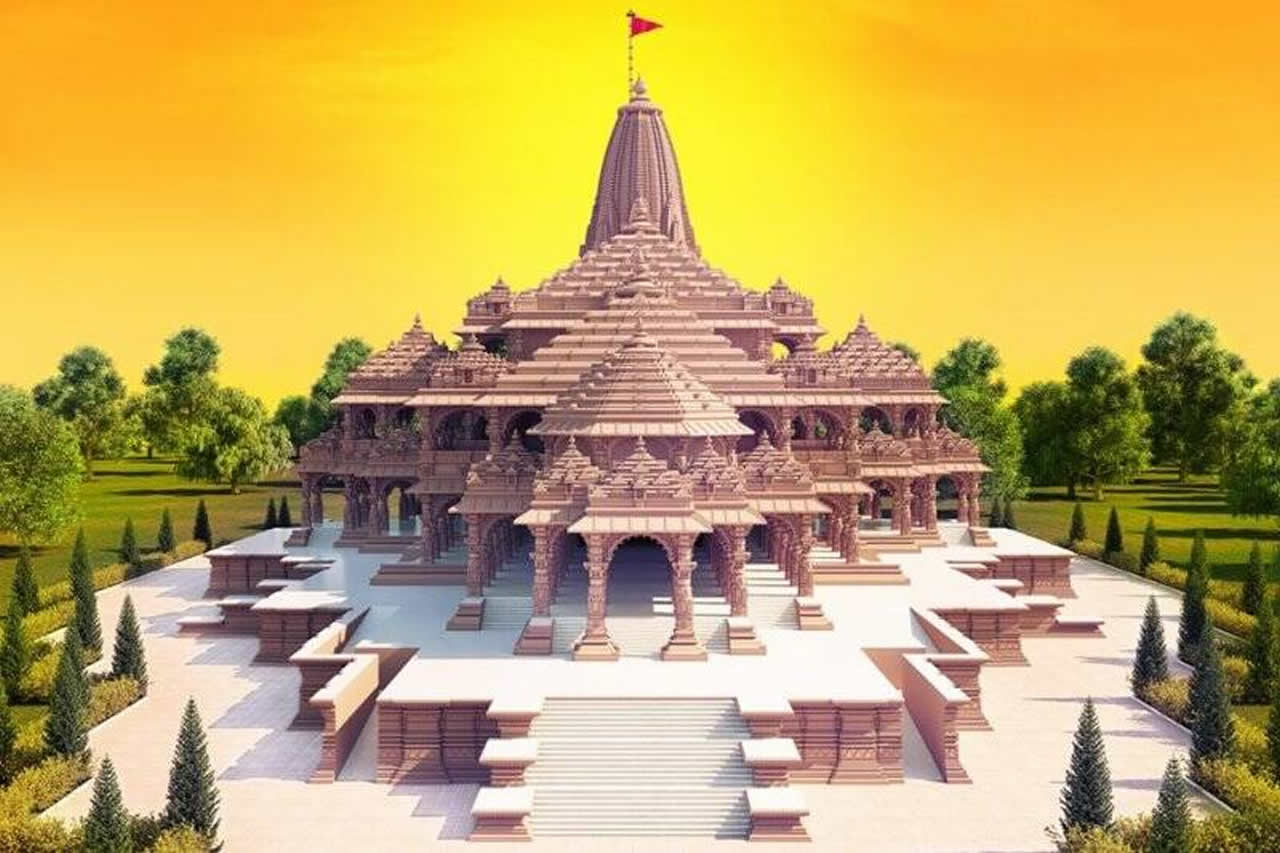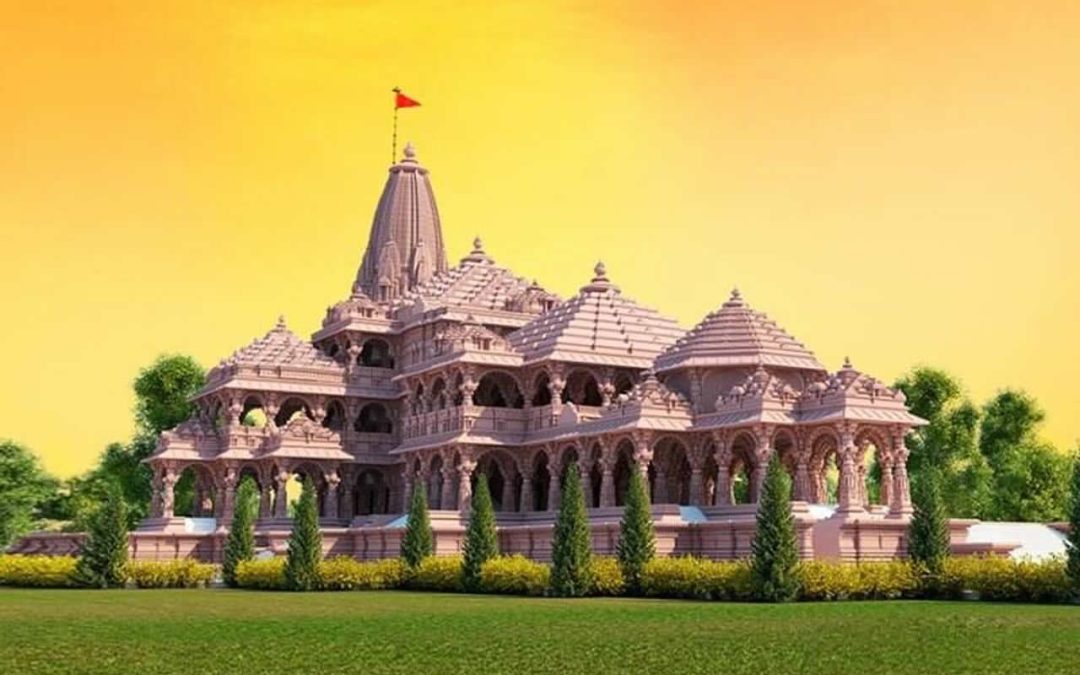The Ayodhya Ram Mandir, located in the ancient city of Ayodhya in Uttar Pradesh, India, is a testament to the rich cultural and religious history of the country. The temple holds immense significance for millions of Hindus worldwide, symbolizing not only a place of worship but also a symbol of unity, faith, and resilience. The journey of the Ayodhya Ram Mandir spans centuries, marked by historical events, legal disputes, and a collective aspiration for peace and harmony.
Historical Background:
Ayodhya, the birthplace of Lord Rama, is steeped in mythology and has been a sacred site for Hindus for millennia. The epic Ramayana, written by the sage Valmiki, narrates the life and adventures of Lord Rama. The belief that Rama was born in Ayodhya has been ingrained in the hearts and minds of Hindus for centuries.
The temple dedicated to Lord Rama at the disputed site has a long and complex history. It is believed that a temple stood at the site since ancient times, but historical evidence is scarce. The first recorded instance of a temple at the site is in the 16th century during the reign of the Mughal emperor Babur.
Babri Masjid and the Controversy:
In 1528, Babur, the founder of the Mughal dynasty in India, is said to have ordered the construction of a mosque at the site, known as the Babri Masjid. The mosque became a focal point of controversy and tension between Hindus and Muslims in later centuries.
The Babri Masjid stood at the site for several centuries, but its presence fueled religious tensions. In 1992, a large mob of Hindu activists, claiming that the mosque was built on the ruins of a Hindu temple marking the birthplace of Lord Rama, demolished the Babri Masjid. This event marked a dark chapter in Indian history and led to widespread communal riots.
Legal Battles and Ayodhya Verdict:
The demolition of the Babri Masjid resulted in legal battles that lasted for decades. The title suits over the disputed land became one of the longest-running cases in Indian legal history. The legal dispute was characterized by its complexity, emotional charge, and implications for religious harmony.
In 2010, the Allahabad High Court delivered a landmark verdict, dividing the disputed land into three parts – one-third for the Sunni Waqf Board, one-third for the Nirmohi Akhara, and one-third to the party representing the deity Lord Rama (Ram Lalla Virajman). However, both Hindu and Muslim parties were dissatisfied with the verdict and appealed to the Supreme Court.
In a historic judgment on November 9, 2019, the Supreme Court of India unanimously ruled in favor of the construction of a Ram temple at the disputed site. The court also directed the government to allocate an alternative five-acre plot to the Sunni Waqf Board for the construction of a mosque.
The Construction of the Ayodhya Ram Mandir:
Following the Supreme Court verdict, the process of constructing the Ayodhya Ram Mandir began with a groundbreaking ceremony on August 5, 2020. The ceremony was attended by Prime Minister Narendra Modi, marking a significant moment in India's history.
The construction of the temple is overseen by the Shri Ram Janmabhoomi Teerth Kshetra, a trust established by the government for the development and management of the temple complex. The design of the temple is inspired by traditional Indian architecture and aims to be a grand symbol of faith and cultural heritage.

Symbolism and Unity:
The Ayodhya Ram Mandir holds profound symbolism for Hindus, signifying the realization of a long-cherished dream to have a grand temple at the birthplace of Lord Rama. The temple is seen as a symbol of cultural identity, religious freedom, and the resilience of the Hindu community.
The construction of the temple is also viewed by many as a step towards fostering unity and healing the wounds of the past. The Supreme Court's verdict, emphasizing the need for communal harmony, has been a guiding principle in the approach to the construction and development of the temple complex.
Interfaith Dialogue and Outreach:
In the aftermath of the Ayodhya verdict, there has been an increased emphasis on interfaith dialogue and understanding. Leaders from various religious communities have come together to promote harmony and mutual respect. The construction of the mosque on the allocated five-acre plot has been seen as a positive step towards fostering religious coexistence.
The Ayodhya Ram Mandir project has also generated interest and support from the international community. The temple's significance as a cultural and religious landmark has drawn attention from scholars, historians, and religious leaders across the globe.
Challenges and Criticisms:
While the construction of the Ayodhya Ram Mandir has been celebrated by many, it has also faced criticism and challenges. Some critics argue that the focus on religious monuments diverts attention from pressing social and economic issues. Others express concerns about the potential for the temple to become a symbol of exclusion rather than unity.
The delicate balance between religious freedom and secularism in India continues to be a point of debate. The challenge lies in ensuring that the construction of the temple does not marginalize any community and that it contributes positively to the nation's pluralistic identity.
Final Thoughts:
The Ayodhya Ram Mandir stands as a monumental testament to the religious and cultural history of India. Its construction, marked by legal battles, historical controversies, and a commitment to communal harmony, has been a defining chapter in the country's journey.
The temple represents more than just a place of worship; it embodies the aspirations of a community, the resilience of a nation, and the potential for unity in diversity. As the Ayodhya Ram Mandir takes shape, it is crucial for all stakeholders to ensure that its presence contributes to the pluralistic ethos of India and becomes a beacon of harmony for generations to come.

